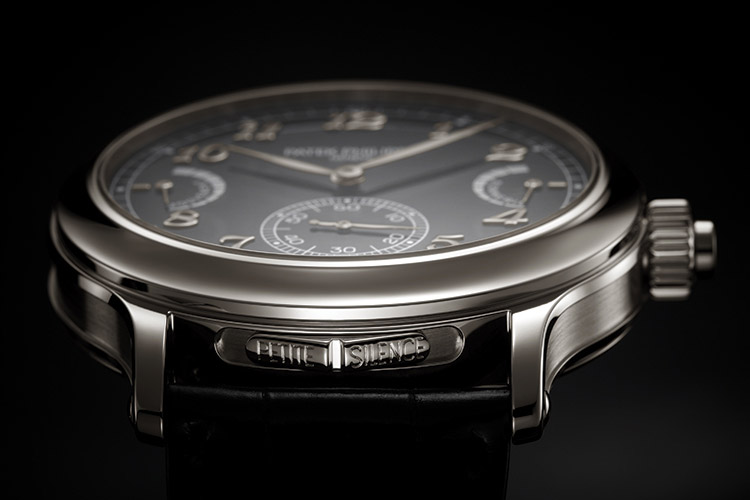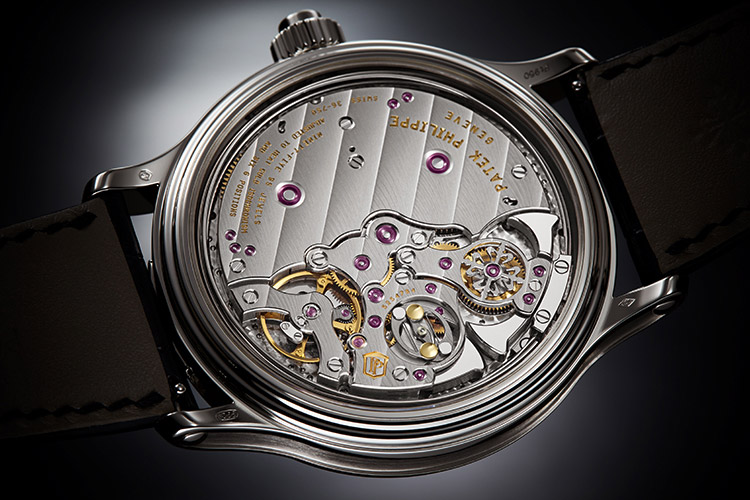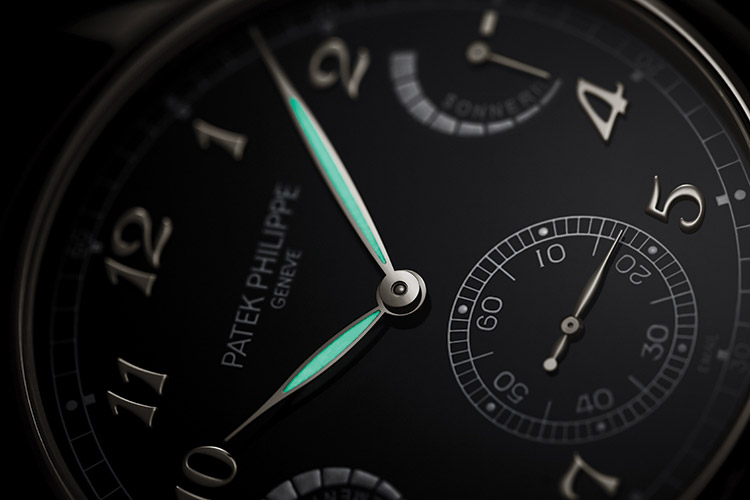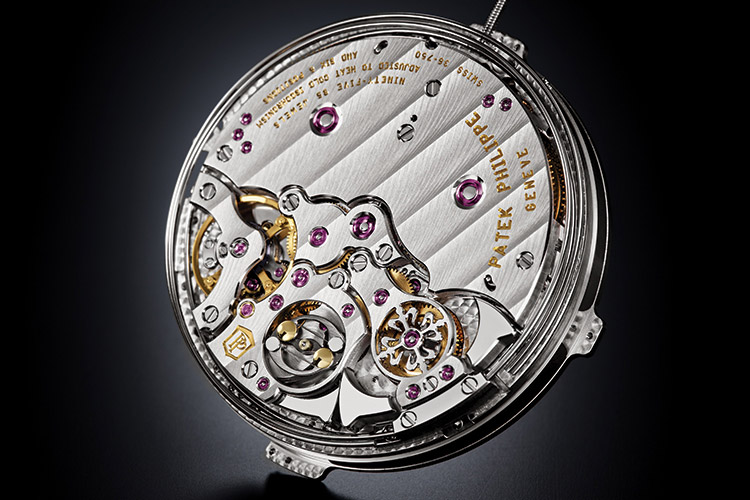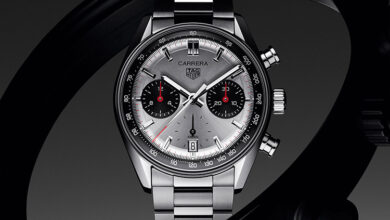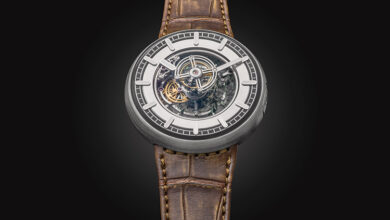A complex Grande Sonnerie from Patek Philippe
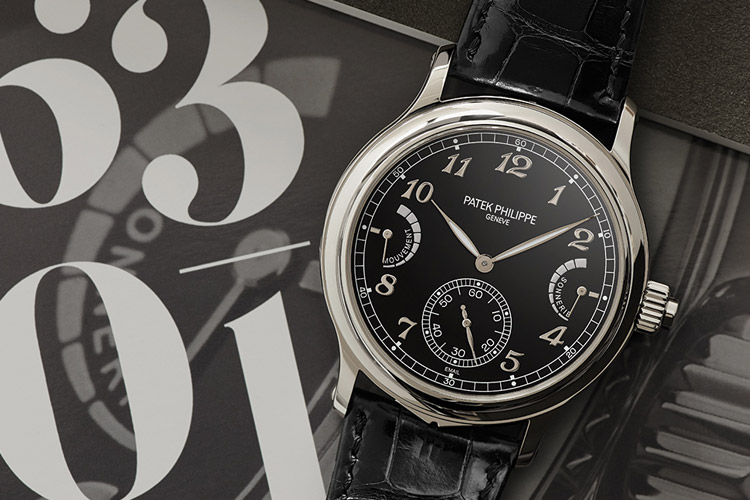
Patek Philippe has leveraged its mastery of the music of time to enrich its regular collection with a masterpiece of miniaturisation and acoustic perfection: the Ref. 6301P Grande Sonnerie. This grand complication is the manufacture’s first wristwatch that presents the Grande Sonnerie as the epitome of horological complications in its purest form, complemented with a Petite Sonnerie and a Minute Repeater
To implement the grande sonnerie as envisioned, Patek Philippe developed a new movement as a spin-off of the caliber 300 of the Grandmaster Chime. Given its 703 parts, the caliber GS 36-750 PS IRM is remarkably compact for such a complex mechanism (diameter: 37 mm; height: 7.5 mm). One of the traditionally greatest difficulties for the engineers of grande sonneries is mastering energy flows and power reserves.
Unlike in minute repeaters, which must be triggered on demand by actuating a slide or a pusher, the grande sonnerie needs to have sufficient reserve power to automatically sound the required number of time strikes with uniform acoustic quality. To address this challenge, Patek Philippe endowed the caliber GS 36-750 PS IRM with two tandem-connected twin mainspring barrels, one for the going train and the other for the chiming mechanism. This configuration delivers a power reserve of 72 hours for the movement and of 24 hours for the strikework.
The 24-hour power reserve for the strikework allows the watch to strike the full hours and the quarter hours during an entire day and, thanks to a uniform torque characteristic, to assure optimised sound intensity. The two twin mainspring barrels are wound with the crown pushed in and rotated clockwise to wind the going train and counter-clockwise to wind the strikework. The four mainsprings feature slip bridles to avoid over-tensioning.
As regards the strikework, Patek Philippe opted for three classic gongs – low, medium, high. This technical option requires more energy than systems with two gongs. It also complicates the watchmaker’s work when tuning each gong until all three create the legendary “Patek Philippe sound” so coveted by connoisseurs. Attached to the movement, the three gongs must not touch one another nor other parts of the case or movement despite the compact space in which they hover. Three hammers of identical size and mass guarantee a uniform strike for all three pitches.
The selection of platinum as the case material also presented a challenge because it is difficult to master acoustically. The hours are struck on a low-pitched gong, the quarter hours with a three-strike high-low-medium sequence. The melody for the first quarter hour (15 minutes) sounds once, for the second quarter hour (30 minutes) twice and for the third quarter hour (45 minutes) three times.
Each quarter-hour sequence is automatically preceded by the number of elapsed hours, and followed by the number of quarter hours. Thanks to the energy stored in the twin mainspring barrel of the strikework, this adds up to an impressive total of 1,056 strikes in 24 hours. The owner can also select the strikework mode: petite sonnerie; it strikes the full hours but omits the repetition of the hours when striking the quarter hours. In the silence mode, the automatic time strike is switched off altogether.
The platinum case, inspired by the Ref. 5370 split-seconds chronograph presented in 2015, expresses subtlety and balance in its curves and rounded contours, with the concave bezel for a perfect transition from the slightly cambered sapphire-crystal glass and the countersunk satin-finished case flanks. Like all Patek Philippe platinum cases, it sports a small diamond set in this instance at 12 o’clock because the usual 6 o’clock position is occupied by the slide switch for selecting the strikework mode.
The timepiece features a black grand feu enamel dial with the “glacé” finish, applied Breguet numerals, and leaf-shaped hands in luminescent white gold. The displays for the hours, minutes, and subsidiary seconds at 6 o’clock are well proportioned alongside two power-reserve indicators for the movement and the strikework at 3 and 9 o’clock with semi-circular scales identified with the inscriptions Mouvement and Sonnerie. The timepiece is worn on a hand-stitched shiny black alligator strap with square scales and a fold-over clasp.
The six complications of the new Ref. 6301P Grande Sonnerie are Grande sonnerie; Petite sonnerie; Minute repeater; Movement power-reserve indicator; Strikework power-reserve indicator; and Jumping seconds.
The Patek Philippe Manufacture has also filed a number of patents for mechanisms used in this timepiece. They are:
- Isolation of the grande sonnerie in the silence mode:
In the silence mode, this mechanism totally isolates the grande sonnerie from the power flow and eliminates energy consumption. - Selection of the strikework mode:
This mechanism enables the selection of the strikework mode (petite sonnerie, grande sonnerie, silence) with a single lever and a single slide switch. Two slide switches were formerly required for this operation. - Jumping display with a jumping seconds wheel:
This innovative mechanism for jumping displays does not require springs and levers but instead uses wheels and a release lever that instantaneously unblocks the wheel train every second, and features a coiled return spring as the only power element. The advantage of this system is that it makes energy consumption easier to regulate and control.
